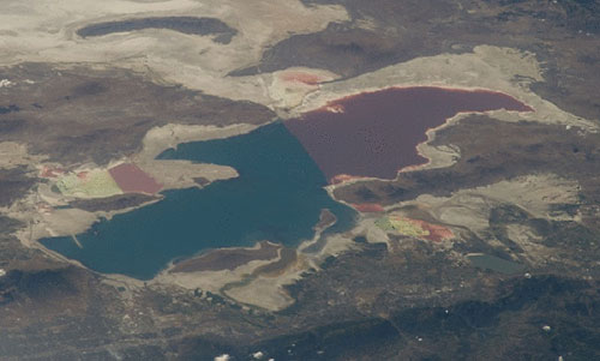Research Catalyst Grant News
May 16, 2018
Brian Head Revisited: Outdoor Classroom
iUTAH researcher Jackie Grant has been in the news for her work to create a community classroom out of the charred remains of the 2017 Brian Head fire site, which damaged more than 72,000 acres of Dixie National Forest and Bureau of Land Management land. Grant, a biology professor at Southern Utah University, received funding last year from the Bureau of Land Management’s Colorado Plateau Native Plant Program to collect seeds from native plants for research.
A media release provided by Utah Public Radio’s Kerry Bringhurst said that Grant is “working with citizen scientists to help restore the damaged land. Two SUU community education courses taught June 7-22 and July 30- Aug. 14 will give participants the opportunity to work with forest and land managers.” When asked about the program, Grant welcomed “the community to interact with the federal agencies and an educator, myself, to learn about plants and how we use them to restore the land after the fire."
The story goes on to add that, “the course also includes training for citizen scientists who want to contribute to a global database. 'And teach other scientists all over the world about the amazing diversity of plants and possibly some insects that we have down here in southern Utah.’”
Press: Utah Public Radio
Related news article: Fighting Wildfires with Wildflowers
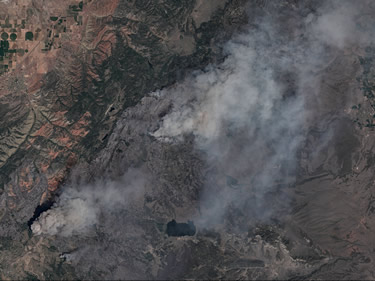
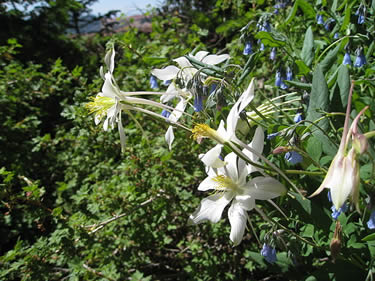
Jackie Grant, a biology professor at SUU, to lead community courses on restoration with native plants at 2017 Brian Head fire site. Credit: Wikimedia Commons
April 2, 2018
Building Cross-Campus STEM Collaboration in Utah
The iUTAH EPSCoR project has built Science, Technology, Engineering, and Math (STEM) capacity in Utah through its Research Catalyst Grant (RCG) program. These competitively funded grants targeted faculty at primarily undergraduate institutions (PUls) involved in water-related research. They also strongly encouraged undergraduate student participation in research, presentations, and publications. What started as seed funding for research evolved to take a more holistic approach including professional development, release time from teaching, and funding for additional equipment and resources. An outreach component of this program also supported 23 outreach events to diverse audiences.
As a result, 20 researchers, 11 of them women, were awarded RCG funding totaling $300,000 over the past five years. The research involved four different PUIs: Southern Utah University, Utah Valley University, Weber State University, and Westminster College.
The research of RCG awardees has captured the attention of larger universities in Utah, as demonstrated in these stories below:
"The RCG grants and participation in iUTAH gave the PUI faculty opportunities to flex their professional muscles through research; it also provided a break from heavy teaching loads,” said one participant in a post-award focus group. Another applicant not receiving an RCG grant said that “the whole RCG process had been instrumental in providing a relatively streamlined, low friction opportunity, which incentivized him to put together a proposal, and providing feedback that strengthened the proposal to the point where it could be competitive in another setting.” The applicant later received funding from a federal agency.
Awardees have taken full advantage of professional development training, opportunities, and funding offered by iUTAH to grow their skills and present their research. Three recipients participated in communications workshops by the Alan Alda Center for Communicating Science, 8 participated in an iUTAH sponsored Broader Impacts Forum, and one recipient was awarded a travel stipend to attend a Council on Undergraduate Research Institute on developing an undergraduate research program at a PUI. The program also supported travel for four students and their mentors to present RCG research at scientific conferences.
iUTAH’s RCG program has also encouraged continuity and synergy among research efforts carried out at PUIs, as evidenced by the publication of a co-authored paper by two non-concurrent RCG recipients. Suzanne Walther from UVU was among the first researchers to receive a RCG award in 2013. After she left the university for another post, Weihong Wang continued Walther’s initial research, and later expanded on the theme by submitting her own successful RCG proposal in 2015. Both researchers published their results, along with other iUTAH collaborators, in a paper titled “The historical records of stable isotopes and trace metals along Utah Lake-Jordan River transition zone, Utah (USA)” through the Utah Geological Association Publication, in 2017.
Interdisciplinary research and cross-campus collaborations has been a hallmark of the iUTAH RCG program. Research projects have involved 111 students to date, representing one third of the iUTAH undergraduate student cohort. Additionally, 14 of the researcher awards involved collaborations with at least one of three academic research universities in the state. Three also involved collaborations with other PUIs. To date, RCGs have generated 7 publications, 51 presentations, and 8 submitted grant proposals. Five of these grant proposals were awarded, for a total of $169K. Undergraduate students at PUIs throughout Utah were truly the beneficiaries of the RCG program by being involved with faculty mentors in real research and having opportunities not otherwise available to them.
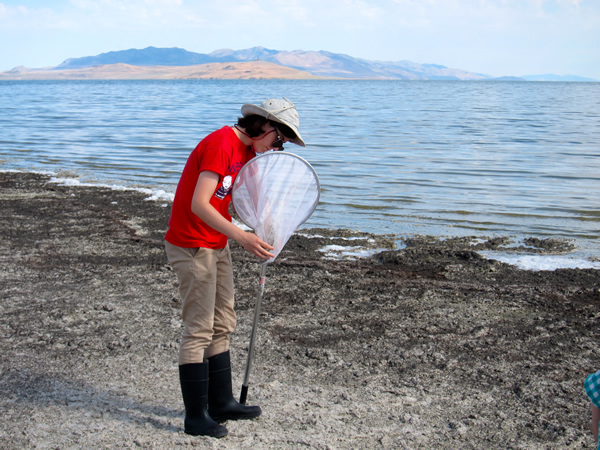
January 31, 2018
Dust on Snow Controls Springtime River Rise in West
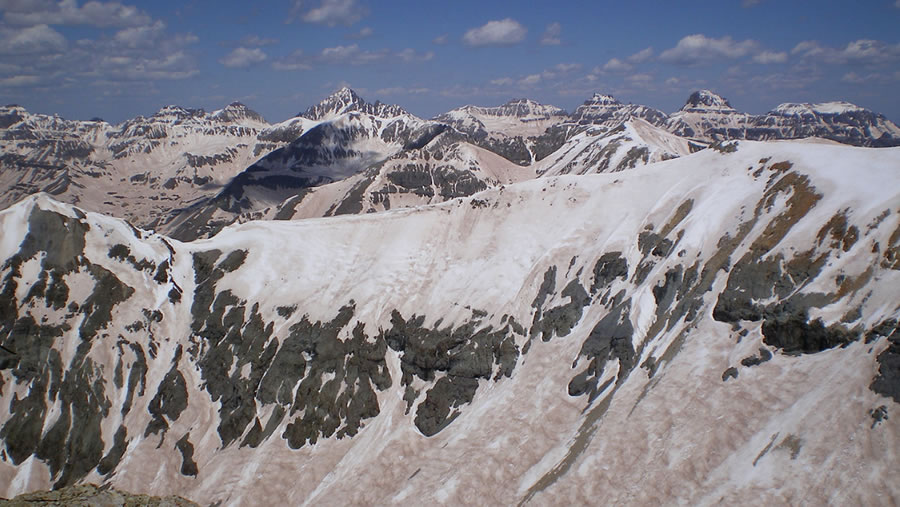
University of Utah and iUTAH researcher McKenzie Skiles has been in the news for her contribution to research on the effects of dust on mountain snowpack during spring runoff. Skiles received funding through an iUTAH Research Catalyst grant on snow hydrology along the Wasatch Front in 2017.
A media release provided by the University of Utah’s science writer Lisa Potter said the “study has found that dust, not spring warmth, controls the pace of spring snowmelt that feeds the headwaters of the Colorado River. Contrary to conventional wisdom, the amount of dust on the mountain snowpack controls how fast the Colorado Basin’s rivers rise in the spring regardless of air temperature, with more dust correlated with faster spring runoff and higher peak flows.
The finding is valuable for western water managers and advances our understanding of how freshwater resources, in the form of snow and ice, will respond to warming temperatures in the future. By improving knowledge of what controls the melting of snow, it improves understanding of the controls on how much solar heat Earth reflects back into space and how much it absorbs — an important factor in studies of weather and climate.
Coauthor McKenzie Skiles, an assistant professor in the University of Utah Department of Geography, said that while the impacts of dust in the air, such as reduced air quality, are well known, the impacts of the dust once it’s been deposited on the land surface are not as well understood. ‘Given the reliance of the western U.S. on the natural snow reservoir, and the Colorado River in particular, it is critical to evaluate the impact of increasing dust deposition on the mountain snowpack,’ she said.”
The article titled “Variation in rising limb of Colorado River snowmelt runoff hydrograph controlled by dust radiative forcing in snow” was published in the journal Geophysical Research Letters. Along with Tom Painter of NASA’s Jet Propulsion Laboratory in Pasadena, California and McKenzie Skiles from the University of Utah, Salt Lake City, other coauthors are from University of Colorado, Boulder; and University of California, Santa Barbara.
Press: Jet Propulsion Laboratory website | UNews
December 20, 2017
WSU Symposium Showcases Student Research
Amid the hectic schedule of finals week, some Weber State University students made time in their busy schedules to present their research findings from participation in iUTAH’s summer iFellows undergraduate research fellowship program and faculty Research Catalyst Grants (RCG). The event was co-hosted by Carla Trentelman, associate professor of Sociology, and Dan Bedford, professor of Geography and WSU honors program director, and attended by students, faculty, administrators, and friends of iUTAH.
This year, two WSU undergraduates, Maggie England and Mike Fowles, were part of a cohort of 15 students that participated in the 11-week summer research experience. During that time, they were actively involved in iUTAH fieldwork, research, and analysis. Working with faculty and student mentors, these students learned about the challenges and solutions needed to sustain the state’s water supply over the next few decades and the environmental impacts that we have on bird species, and aquatic habitats in local watersheds.
Students presenting research at the WSU symposium include Maggie England, Mike Fowles, and Rebekah Holt. Past participant attendees included Cynthia Elliot, 2016 iFellow, William Soule, Summer Institute mentor, and Kassandra Sqrow, who participated in both an RCG and as a Summer Institute mentor.
Rebekah Holt worked with faculty mentor Bridget Hilbig, assistant professor of botany at WSU, on a RCG project focused on enhancing soil complexity to improve sustainable urban agriculture. They constructed a rooftop garden, adding Arbuscular mycorrhizal fungi (AMF) native to Utah to soil and measured growth responses in pepper plants. While the AMF plants grew better, challenges with the location and the growing boxes limited the growth of viable crops. Future research will involve changing the plants from peppers to parsley, and making adjustments to the boxes and watering schedule.
“Ever since iUTAH began, our colleagues at Weber State have been terrific supporters of undergraduate research,” said Mark Brunson, iUTAH Education, Outreach and Diversity director and professor in the Department of Environment & Society at Utah State University. “Our research faculty have greatly enjoyed working with Weber students, and the work they’ve done has made a real contribution.”
In the five years that WSU has partnered with iUTAH, 41 students have been involved in undergraduate research, including 14 iFellows, 7 Summer Research Institute mentors, and 24 student RCG researchers.
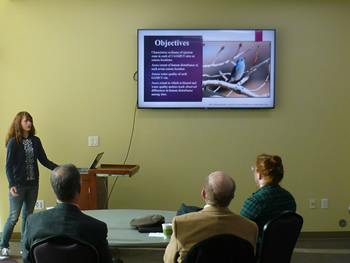
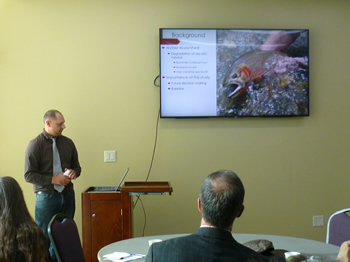
April 25, 2017
Mystery of the Missing Mercury at the Great Salt Lake

Westminster College and iUTAH researcher Frank Black has been in the news for his contributions to research on the changes in the toxic methylmercury levels in deep waters of Utah’s Great Salt Lake, between 2010 and 2015. The story, conducted in collaboration with a team of 10 scientists from the University of Utah, Westminster College, and Utah Department of Natural Resources, came out in a paper published April 12 in Environmental Science & Technology.
A media release provided by the University of Utah’s science writer Paul Gabrielsen said the “disappearance of the mercury was not due to aggressive environmental policies or a wide-ranging cleanup effort. Instead, it’s part of a story involving a large-scale unplanned chemistry experiment, a sometimes-stinky lake, and ducks – in which the mercury did not disappear…. A Union Pacific railway line crosses the lake, dividing it into a smaller north arm and a larger south arm, with the line drawn right at the base of the bunny-ear-like northern extensions of the lake. Because the north arm has no major river inflow, it’s much saltier than the south arm. Two culverts in the railroad line allowed briny north arm water to flow into the south arm and, because of its higher density, sink to the bottom of the south arm.”
“The difference in density between the deep and shallow waters prevented mixing, says (University of Utah) geology and geophysics professor William Johnson, and kept fresh oxygen from infiltrating into the deeper water layers. Decaying organic matter on the lake floor sucked all the oxygen out of the briny layer, forcing microorganisms to find something else to “breathe.” Without oxygen, some bacteria turn to nitrate to fuel the chemical processes of life. When the nitrate is gone, they turn to iron, manganese, and finally sulfate. Residents of the Salt Lake Valley may have noticed a byproduct of the sulfate-breathing bacteria – sulfide, a stinky rotten egg smell emanating from the lake. In another side effect, the bacteria turn elemental mercury into toxic methylmercury.”
Research on this study was funded by iUTAH through two Research Catalyst Grants in 2014 and 2017. Black’s current funding award builds upon his earlier work on the Great Salt Lake by examining wildfire ash and GSL dust as sources of heavy metals to Utah’s aquatic ecosystems. RCG funding supports a collaborative culture of multi-institutional research, encouraging primarily undergraduate institutions such as Westminster College, to involve themselves and their students in current science research. Chris Mansfield, a recent graduate of Westminster College and one of Black’s students, was involved in the team that published the study.
The study can be found in its entirety here.
Press: UNews | Phys.org | Science Newsline | ScienceAlert
